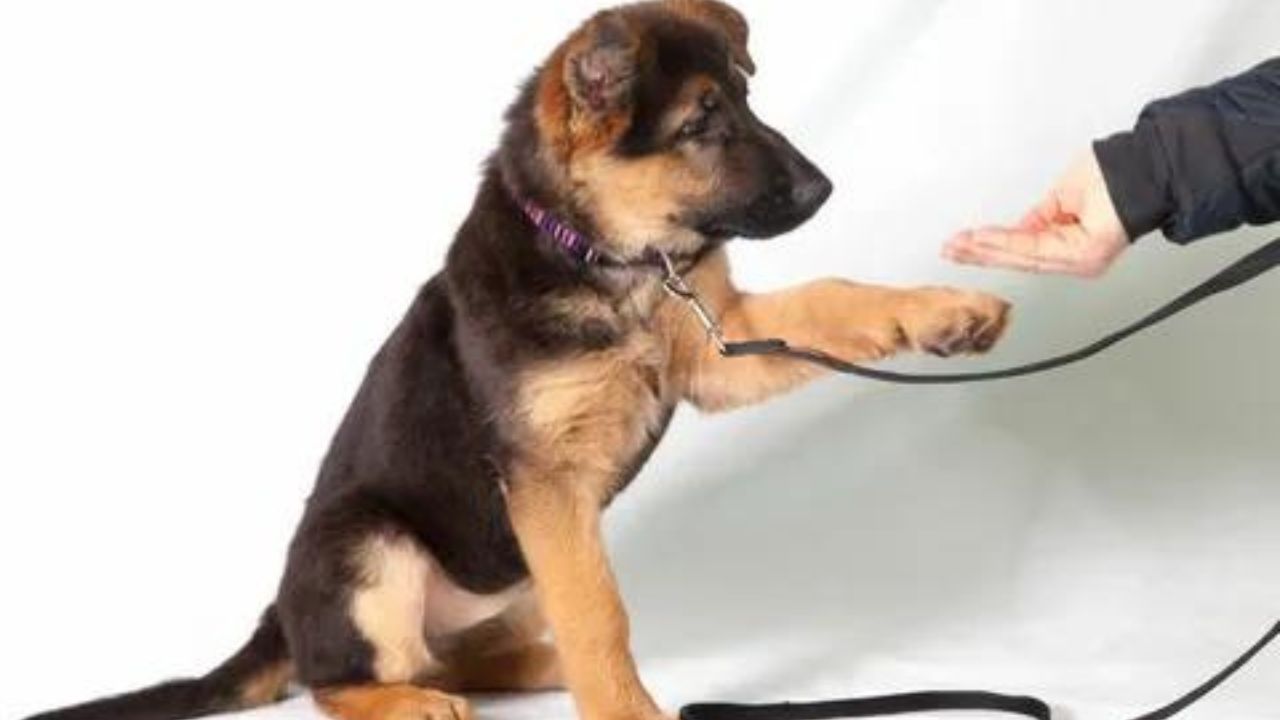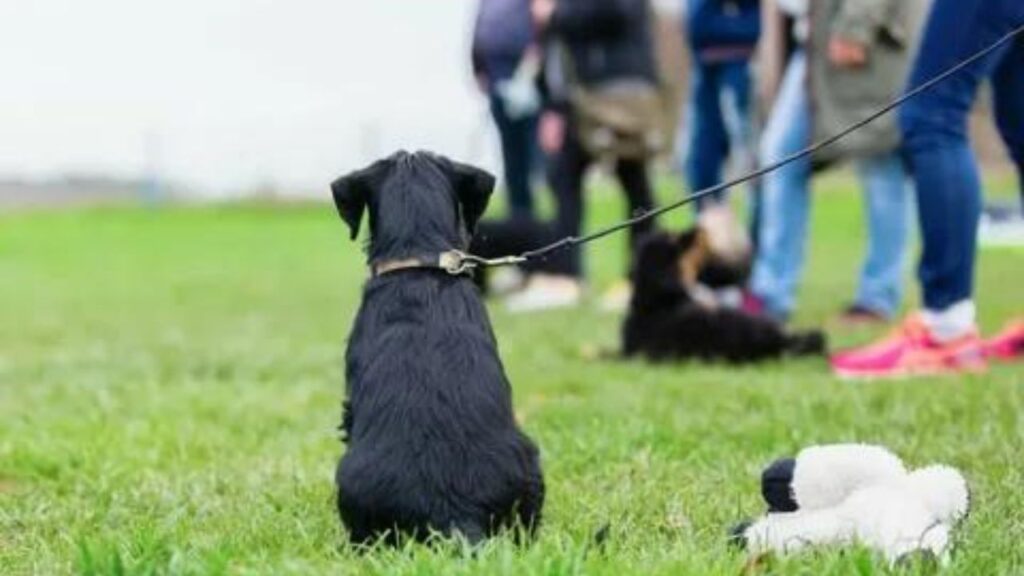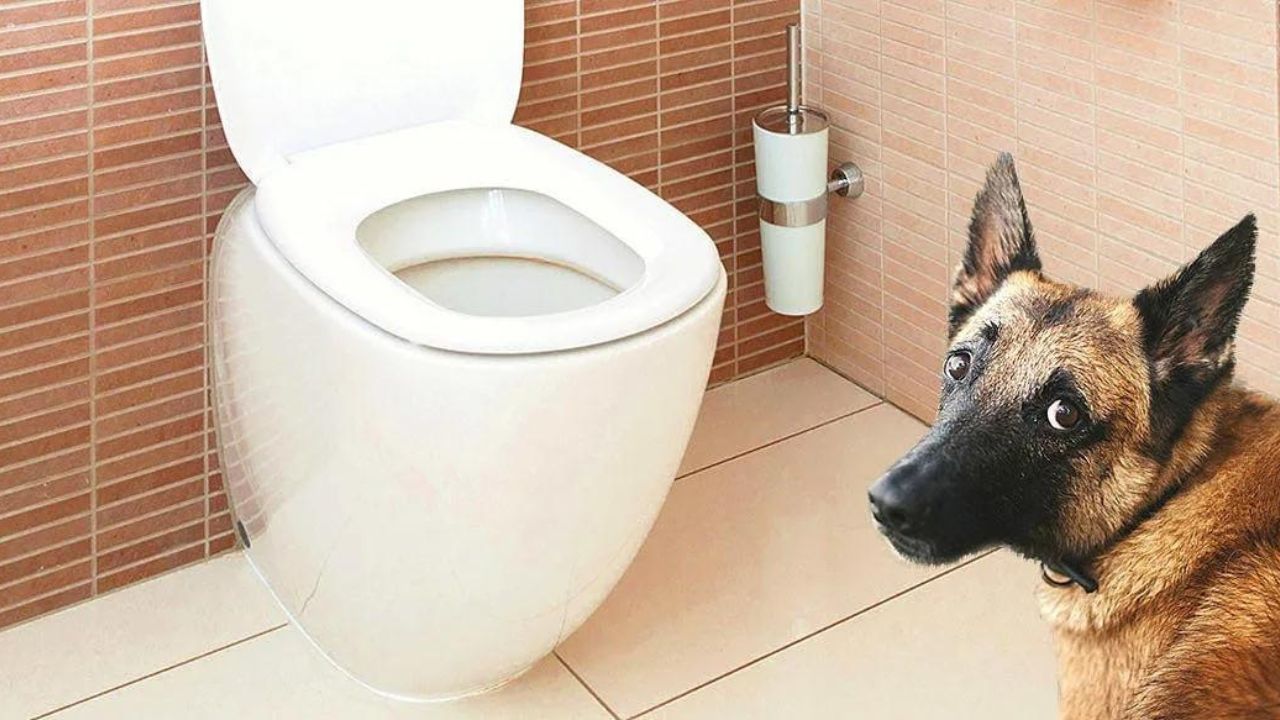
An essential component of having a contented and well-mannered dog is puppy training. How old is your new pet? This is a question that many first-time pet owners have. Although there isn’t one solution that works for everyone, experts usually advise beginning training as soon as feasible.
Puppies may learn basic training commands as early as eight weeks old, including sit, stay, and come. At this age, puppies have a natural drive to please their owners and are eager to learn new things. Early training also fosters a stronger link between the owner and puppy, which will benefit later on in the training process.
Key Takeaways
- Start training your puppy as early as possible
- Teach Basic Training Commands for Puppies such as sit, stay, and come as soon as the puppy is 8 weeks old
- Begin House Training Your Puppy early to establish good habits
Use Consistency When Training Your Puppy
Maintaining consistency in your approach to signals and training is crucial. When teaching your puppy fundamental signals like sit, stay, and come, use the same phrase and/or hand gesture.
Additionally, even in inconvenient situations, it’s critical to continually encourage desired actions. That means that if your dog is at the door begging to go potty, drop what you’re doing, let them out, and give them a treat for potty time outdoors.
Basic Training Commands for Puppies
It is essential to begin puppy training as early as possible. Puppies can start learning the fundamental instructions that will help them grow up to be obedient and well-behaved as early as eight weeks old. We’ll go over some of the most important commands to teach your puppy in this part.
Sit Command
One of the most fundamental instructions that each puppy should learn is how to sit. In addition to being helpful for obedience, this command may also be used to quiet your excited puppy.
To teach your puppy to sit, follow these steps:
- Hold a treat in front of your puppy’s nose.
- Slowly move the treat up and back towards your puppy’s ears.
- As your puppy follows the treat with their nose, their bottom will naturally lower to the ground.
- As soon as your puppy sits, say “sit” and give them the treat.
Stay Command
The stay command is another important command that can help keep your puppy safe in a variety of situations. This command teaches your puppy to remain in one place until they are released.
To teach your puppy to stay, follow these steps:
Have your puppy sit in front of you.
Hold your hand up with your palm facing towards your puppy and say “Stay.”
Take a step back and wait a few seconds.
If your puppy remains in place, say “good stay” and give them a treat.
Gradually increase the distance and duration of the stay as your puppy becomes more comfortable with the command.
Recall Command
The recall command is essential for keeping your puppy safe and under control when they are off-leash. This command teaches your puppy to come to you when called.
To teach your puppy to recall, follow these steps:
- Start by calling your puppy’s name in a happy tone of voice.
- As your puppy begins to come towards you, say “come” and praise them.
- Give your puppy a treat as soon as they reach you.
- Gradually increase the distance between you and your puppy as they become more comfortable with the command.
House Training Your Puppy
One of the most crucial parts of raising a dog is house training them. When your puppy is 8 weeks old, or as soon as possible after being brought home, it is crucial to begin house training. Puppies may pick up fundamental cues like sit, stay, and come at this young age. They can also learn where they should and shouldn’t pee.
Creating a schedule is one of the best strategies for house-training a puppy. This entails putting the puppy outdoors to relieve itself regularly—for example, right before bed, right after meals, right after naps, and right before nighttime. To help the puppy understand that this is the proper location for bathroom breaks, taking them to the same location each time is crucial.
It’s critical to train your puppy with patience and consistency and to use an enzyme cleanser to eliminate any smells that could encourage him to re-urinate in the same location. Depending on the temperament and learning capacity of each puppy, house training can be completed in a few weeks to many months with patience, consistency, and positive reinforcement.
Socialization Training

Puppy training must include socialization training, which should start as soon as feasible. As early as seven or eight weeks of age, pups can begin socialization lessons, according to the American Veterinary Society of Animal Behavior (AVSAB). Early socialization training is essential for teaching pups how to interact with people and other canines.
Puppy socialization training should include exposing them to a variety of surfaces, noises, sights, and scents. Through this exposure, pups learn to feel more at ease and self-assured in a variety of settings, which can help them avoid fear and anxiety as they grow older. It’s crucial to introduce puppies to a variety of people, such as kids, adults, and elderly people, to assist them in developing social skills with people of all ages.
Training Tools for Puppies
A few basic training aids are necessities that each puppy owner should have with them at all times. Both the puppy and the owner may benefit from these tools by making training sessions more productive and pleasurable.
Training Leash
Teaching a puppy to walk on a leash requires the use of a training leash. A decent training leash should have a grip that is pleasant for the owner to hold, and be lightweight and sturdy. Additionally, it must be movable so that the puppy’s size may be adjusted. If the puppy is allowed to explore, a retractable leash can be helpful, but it should only be used under strict supervision.
Training Treats
Giving a dog training treats will encourage it to learn new commands. To enable the puppy to swiftly finish them and return to training, they should be little, chewable, and simple to break. Selecting wholesome and nourishing treats is crucial to prevent the dog from gaining excessive weight. Small bits of cooked chicken, cheese, or freeze-dried liver are a few healthy choices.
Clicker Training
Clicker training is a popular method of training that uses a clicking sound to signal to the puppy that they have done something correctly. The clicker should be small and easy to hold, with a loud and clear clicking sound. Clicker training can be used to teach a wide variety of commands, from basic obedience to more advanced tricks.
Common Mistakes in Puppy Training
Training a puppy is a significant responsibility that requires patience, consistency, and a clear understanding of the dog’s behavior and learning process. Unfortunately, many new dog owners make mistakes that can negatively impact their puppy’s training progress.
Here are some common mistakes in puppy training that pet owners should avoid:
Starting too late
The most frequent error made while teaching a puppy is to begin too late. As early as seven or eight weeks of age, pups can begin socialization lessons, according to the American Veterinary Society of Animal Behavior (AVSAB). If training is delayed, the puppy may find it more difficult to acquire new skills and adjust to their environment, which may result in behavioral problems in the future.
Using punishment-based training methods
Misuse of punishment-based training techniques, such as striking, screaming, or shock collars, is another frequent error made while teaching puppies. These techniques have the potential to hurt dogs and make them fearful, anxious, or aggressive. Instead, to reward excellent behavior, employ positive reinforcement strategies like play, snacks, and praise.
Inconsistency
Another typical error that might impede a puppy’s growth in training is inconsistent training. Dogs need regularity and consistency to flourish, but inconsistent training might leave a puppy confused and upset. Setting up limits and regulations that are obvious and constantly enforcing them is crucial.
Lack of socialization
Socialization is critical for puppies to learn how to interact with other dogs and people. A lack of socialization can lead to fear, anxiety, and aggression in dogs. Socialization should start early, and puppies should be exposed to different environments, people, and animals to help them develop into well-adjusted adult dogs.
Professional Help for Puppy Training
Although it may be enjoyable and fulfilling, training a puppy can sometimes be difficult. Teaching their puppies the fundamentals of housebreaking, socialization, and obedience may prove challenging for many pet owners. It might be beneficial in certain situations to have expert assistance.
There are several ways to receive professional assistance, including online training courses, group training sessions, and personalized instruction. Private training sessions usually involve a trainer working one-on-one with the puppy, tailoring the program to meet his or her unique needs. Puppies may, however, acquire fundamental obedience skills in a group environment and mingle with other dogs in class.
It’s crucial to remember that not every expert dog trainer is made equal. It is recommended that pet owners conduct due diligence and locate a reliable, qualified dog trainer who uses positive reinforcement methods.
Positive reinforcement is a form of training that, as opposed to punishing poor conduct, rewards positive behavior with treats, praise, or affection. It has been demonstrated that this approach is both more humanitarian and efficient than punishment-based approaches.
Conclusion
Training a puppy is an essential part of raising a well-behaved and happy dog. The optimal age to start training a puppy is between 8 and 12 weeks old. At this age, puppies are receptive to learning and can quickly pick up on basic commands.
Positive reinforcement is the most effective training method for puppies. This involves rewarding good behavior with treats, praise, or playtime. Punishing bad behavior can be counterproductive and lead to fear and anxiety in puppies.
Everyone in the household should use the same commands and reward system to avoid confusion.
FAQ
What Is The Ideal Time To Begin Puppy Training?
As soon as you bring your new pet home is the best time to start puppy training. As early as eight weeks of age, pups can begin learning fundamental training signals like sit, remain, and come, according to PetMD. Early training will aid in your puppy’s early development of positive habits and behaviors.
When Should I Begin Obedience Training For My Puppy?
Obedience training should begin as soon as possible, but it is important to make sure your puppy has had time to adjust to their new surroundings before starting. According to the American Kennel Club, puppies can begin training classes as early as seven to eight weeks of age.
What Are The First Things To Train a Puppy?
Teaching a dog the fundamental obedience commands of sit, stay, come, and down should occur first. These instructions will aid in laying the groundwork for subsequent, more complex training. Furthermore, early socialization is crucial for your puppy’s development of social skills and comfort around humans and other animals.
How Do I Potty Train My Puppy?
Although potty training a puppy might be difficult, it’s crucial to begin early and maintain consistency. Puppies can start toilet training as early as eight weeks of age, according to The Puppy Academy. When it comes to potty training, consistency is essential. Create a schedule for taking your puppy outdoors and give them praise when they relieve themselves in the proper location.
Are Puppy Training Classes Necessary?
Puppy training lessons can be a terrific method to socialize your puppy and get advice from an expert trainer, but they are not legally required. Puppy training programs, according to the American Kennel Club, may assist your dog in learning the fundamentals of obedience as well as provide them an opportunity to interact with humans and other puppies.
What Age Is Best For Basic Puppy Training?
Puppy training can start as early as eight weeks of age, for basic training. Early training will aid in your puppy’s early development of positive habits and behaviors. Before beginning training, it’s crucial to give your puppy enough time to become used to their new environment. Puppies can start training sessions as early as seven or eight weeks of age, according to the American Kennel Club.






